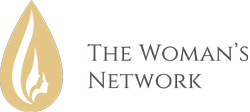Content
Reaching the performing stage is a major success and often precipitates some form of team learning. Team learning is a behavioral process of seeking, gathering, discussing, and implementing methods of team success. Whether through training, group initiative, or innovative leadership, team learning is an action step that ensures healthy team development. Some teams reach a stage of development in which they thrive at their individual and collective tasks. The skills of each member are fully optimized, supervision is almost never needed, and members feel a strong sense of trust in one another.

There’s also a sense of bonding between the team and is more familiar with each other’s personalities and sense of humor. There should also be a sense of comfort in the norming stage when giving constructive feedback through online forms, or asking for help as you work through various tasks. Think of the forming stage like the first day of school or the first day at a new job. There’s excitement in the air and everyone is ready to roll up their sleeves, and get started on the project. Usually, group dynamics and roles have yet to be established, a team leader will typically emerge and take charge and direct the individual members. Norming— The norming stage is when the team starts to gel.
Stage 2: Storming
Psychometrics that explore personality preferences help people understand more about themselves, how they prefer to work, their potential strengths and blinds spots. Used in a team setting, they can deepen understanding of how to work effectively with others, help the team to manage conflict, and maximize a team’s collective strengths. Working with a qualified facilitator, teams can explore this through a series of experiential activities to bring the learning to life and help them learn how to apply it in day-to-day life within the team. In the performing stage, consensus and cooperation have been well-established and the team is mature, organized, and well-functioning.

It’s challenging to balance common and individual goals within a team especially during moments of discord, failure, or stress. They see employees only as pawns to help them accomplish their goals. Building a successful team is about more than finding a group of people with the right mix of professional skills. Over the course of interviewing over 500 leaders for Corner Office, I asked them all about the art of fostering a strong sense of teamwork. Their insights can help you lay the groundwork for a highly productive team that can communicate, cooperate and innovate in an atmosphere of mutual trust and respect.
In most professional circumstances there will be instances where employees will need to work together to complete a common goal or task. These situations can often be the cause of frustration, anxiety, and burnout for one or all members involved in the group (Mastering 5 Stages, n.d.). Members of a flustered and frustrated group can look at the 5 stages and use the behaviours that they’re exhibiting or general feelings of the group to track their progress within the five stages. Tuckman’s use of identifying words such as coping, anticipation, dissatisfaction, and optimism gives members groups the tools to recognize their stage of development.
Key actions to support Performing
Additionally, the ‘forming meeting’ should have an itinerary created by the leader with steps that will keep the team members active and engaged while learning about each other and the task at hand. Tuckman started by defining four stages of forming teams. His theory was further developed by PhD student Mary Ann Jensen ten years later. In 1977, she added the last stage — Adjourning — thereby completing what we now know as the modern theory of Team Development.
They can begin working toward fixing any current issues or decide if they are ready to move on to the next stage of development . Norms result from the interaction of team members during the development process. Initially, during the forming and storming stages, norms focus on expectations for attendance and commitment.
- Initially, during the forming and storming stages, norms focus on expectations for attendance and commitment.
- To run a great meeting, keep the team aligned, and the agenda short, specific, and action-oriented.
- If you want your employees to thrive, a growth mindset is a necessity.
- The first meeting of a group is one of the most important moments in the process.
- Please provide your details below and one of our experienced team will be in touch.
- Sales LeadersFellow helps Sales leaders run productive 1-on-1s, team meetings, forecasting calls, and coaching sessions.
Teams assembled for specific project or for a finite length of time go through a fifth stage, called adjourning , when the team breaks up. A planned conclusion usually includes recognition for participation and achievement and an opportunity for members to say personal goodbyes. Disbanding stages of team development a team can create some apprehension, and not all team members handle this well. The termination of the team is a regressive movement from giving up control to the team to giving up inclusion in the team. This last stage focuses on wrapping up activities rather than on task performance.
End each meeting with insightful and constructive feedback that improves the group process.
Encourage team members to share their ideas and contribute to the discussion. Acknowledge the hard work and dedication that your team has put in. This will help to motivate them to continue to produce high-quality work.

Empowering your team to make decisions is an important aspect of developing a team. Leaders should consider where they can delegate decision-making on different aspects of a project. We’ve found that future-minded leaders have incredible influence over an organization.
#2 Storming Stage
The stage can cause uncertainty, especially among team members who are unsure about their subsequent roles. Thus, leaders should be supportive and help members transition smoothly into the new roles. If you’re a team leader, it’s best to remember that an overlap between the storming and norming stages may appear. Your team can easily backslide into the storming stage, especially when new tasks arise or when handling the more complicated aspects of the project. For this reason, team leaders should be at hand to help members return to the norming stage. Although members understand each other, conflicts may still arise at the norming stage of team development.
Thankfully, you can deploy some strategies to ensure your team navigates the stages without issues. For instance, outlining the team’s purpose and mission at the forming stage and retaliating during subsequent stages ensures no one loses sight of the common goal. Navigating through the five stages of group development isn’t a walk in the park. During the initial stages, in particular, there’ll be lots of conflicts, disagreements, and a clash of personalities. This is expected when people with different perspectives come together to work towards a common goal.
Articulate team and individual needs
Elevator Pitch – This exercise answers the “What exactly are we doing, and why? Creating an elevator pitch together sets your team up with a consistent and simple explanation of your work and the unique value it delivers. Pose lots of questions to your team, even if you think you know the answer. Take a cue from the Atlassian Team Playbook and make time for these three activities.
#3 Norming Stage
This is the home straight for the completion of the group project, so the team leader can help by keeping everyone focused, informed and ready to submit their final product. There may also need to be a bit of conflict resolution at this stage, so implementing problem-solving strategies can help settle disputes and keep the project headed toward its final goal. The five most famous stages of team development are known as Forming, Storming, Norming, Performing and Adjourning. If it’s not a project-based team, the adjourning stage may never occur. For example, the adjourning phase could only be reached by an employee who has decided to leave the team for a new role. Or another employee might make the decision to leave the company altogether.
The team also needs a strong team leader who helps direct and keeps the team to task. This team lead works with the group and develops them into a functioning work machine. I use Bus Trip at the end of a training session or a meeting, and I use it all the time. The game creates a massive amount of energy with lots of smiles, laughs, and sometimes even a teardrop or two. Team communication is key in ensuring that a group can move through the Storming stage while also not avoiding potentially productive discussions around working practices or different perspectives.
They should be prepared for there to be some tension amongst team members but it is still worth it. Given HR’s involvement, the team leader can delegate some of the conflict resolution, staff concerns and, in extreme cases, disciplinary actions to the experienced HR staff. Allow the team to provide constructive feedback to the team leader, the HR team, and any other relevant staff members not directly on the project team. It is highly beneficial for the team leader to take charge of the brainstorming phase and provide structure and a sense of direction.
Building and Leading Teams
It is an excellent and most desirable method but requires good team building and supervision. It highlights the performance level, characteristics, and proven strategies for each of the five phases. Project Managers, Scrum Masters, Agile Coaches, DevOps Leads, and other professionals can apply the information to help handle challenges or issues experienced by teams. By doing so, they’ll advance the teams’ happiness, productivity, and success. Agile project management thought leader, influencer, and author Scott M. Graffius developed a related custom illustration, Phases of Team Development. It highlights the performance level, characteristics, and proven strategies for each of the phases.
A team is simply a tool that accomplishes a project or goal. The team meets and learns about the opportunities and challenges, and then agrees on goals and begins to tackle the tasks. They may be motivated but are usually relatively uninformed of the issues and objectives of the team. Team members are usually on their best behavior but very focused on themselves.

